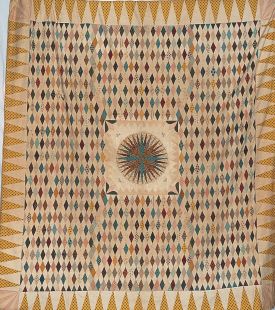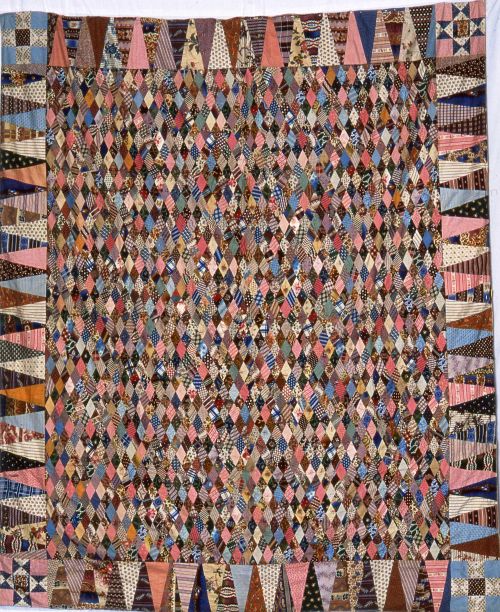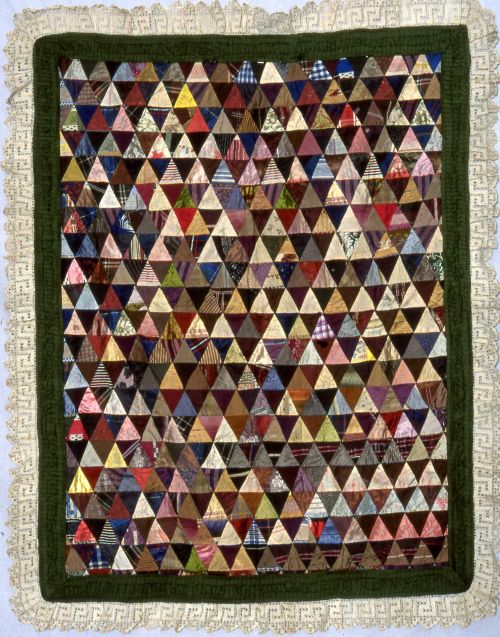Family Treasures
Published: Saturday, 24th April 2010 13:46 PM

Every quilt has a story to tell. Even if no family or maker information survives, these pieces of textile history can be seen from so many angles. Their fabrics can provide a valuable resource of printing qualities, dyeing techniques and patterns available. The quilt’s construction and materials can offer an insight into the social and economic background of its maker. But like all social history objects, quilts really come to life when you know about the people connected to them. This article focuses on a small collection of five quilts, made by the Cann family of Hartland.
Their story starts with Mary Dennis Cann, a farmer’s daughter, born in Devonshire in 1798. Mary developed excellent sewing skills, and by the time of her marriage to Richard Cann in 1828 she had made an exquisite and structurally complicated coverlet for her dowry, known as the ‘Mariners Compass’ due to its central medallion design. This coverlet, made from printed cottons has small but perfectly sewn diamond pieces, constructed individually by hand using the ‘piecing over papers’ technique, before being hand sewn together. It is also one of the largest coverlets in the collection, measuring 252 x 273 cm, showing how much time and skill it must have taken Mary to create. Mary and Richard had six daughters; Annie, Jane, Elizabeth, Fanny, Mary and Margaret, and one son, John. Unfortunately, Richard died of Typhoid Fever in 1842, leaving Mary and her children no choice but to leave their farm and move to Hartland village where they ran a drapers and grocery shop. Mary stayed running the shop for the next 50 years before her death at the age of 92 in 1891.
Mary must have passed on her sewing expertise to her daughters, four of whom stayed at home to help her run the shop, giving them ample spare time for sewing and quilting. Two quilts belonging to the family are cot quilts, and were possibly made for the one married daughter’s son, Charles Tottenham. The other two quilts were made in the mid to late Victorian period; one from printed cottons and one from silks. It has been speculated that these later quilts are not the workmanship of Mary as the quality and accuracy is visibly different to the Mariner’s Compass. The latest of the family quilts is a silk triangles coverlet, made from dress and mourning silks, which were probably remnants of fabrics sold in their drapery shop. The coverlet is one quarter of its original size, and it is likely that it had been made earlier, and then converted into a decorative parlour item by reducing its size and adding a lace frill. This would have coincided with the late Victorian craze for having all things embellished and ornate as decoration in their living space, in contrast to earlier patchwork that was more practical and warm for the bedroom. This was intended to show the wealth and status of the family, as they had access to expensive fabrics, and had the leisure time to create complicated patchwork. The contrast between these last two quilts could also indicate the change in fashionable fabric being sold in the Cann’s shop. Printed cottons, once a high status fabric, fell out of favour as they became cheaper and more readily available, making brightly dyed silks more fashionable for those wanting to show off their wealth and status.
Images and descriptions of all of the the Cann family quilts can be foundin thecollections search section of our website.
 Diamond Mosaic Coverlet, 1840-1860
Diamond Mosaic Coverlet, 1840-1860
 Silk Triangles Coverlet, c. 1850-1900
Silk Triangles Coverlet, c. 1850-1900